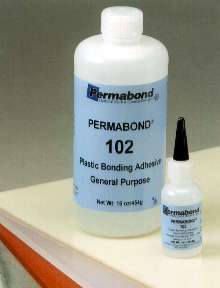Product not in stock anywhere!
You may have asked why some of our adhesives cannot be found in stock at a local distributor location, and that’s a great question!
The short answer is Quality Control.
The longer answer follows.
Permabond manufactures adhesives formulated for engineered designs with strict requirements for performance during and after application. We know our customers rely on the dependability of adhesive performance to ensure that manufacturing and assembly processes run smoothly. We also know that our customers may require technical support before, during and after the selection of an adhesive.
Distributor Partners of Permabond meet rigid criteria that includes product training to help customers through the selection, testing, approval and specification processes. Every customer has unique needs that are most effectively managed by a team of folks from both Permabond and the local distributor.
It is by intentional plan that our products are not carried in retail home hardware stores. These channels do not typically offer suitable storage conditions for many products and are often not prepared or committed to monitoring shelf life. This can result in out of date material with poor performance.
I just want a sample to test.
But, you say, I am not yet in production, I’m still in testing and trials. How can I get a sample of adhesive quickly?
We appreciate the time sensitive aspects of customer projects and when needed, can work with you to arrange a drop shipment when local stock is not available.
Permabond is committed to providing solutions for customer sealing and bonding needs and understands that your best results will come with the freshest product. It is our goal to make sure that we sell and ship only quality product that meet customer requirements.
Poor performance may not be the best description of what can happen when out of date adhesive is used. Changes that occur with aging can sometimes be seen as a benefit.

Here’s what happened to Jim in Michigan. Jim called Permabond looking for “CA glue number 02.” He had an old bottle and tried it, and it worked great – he just needed to get some more. The only trouble is he couldn’t find anyone with ca glue 02 in stock. Since we don’t make a cyanoacrylate adhesive 02, I expected he wanted Permabond 102. He sent me a picture of the bottle, and yes, that label had been scuffed off to the point of being illegible.
There was a bit of nostalgia for the near antique logo / and label I saw in that photo – clearly, the cyanoacrylate Jim tested was a minimum of 5 years old. Permabond 102 in a one-ounce package has a shelf life of 1 year – when stored refrigerated. Jim’s bottle had been lying around for over 5 years in a factory. I was surprised that adhesive that old had worked at all. So with a bit of pride for our quality and purity of our cyanoacrylates – I sent Jim a fresh sample. However, upon testing, Jim called to announce “this new ca glue doesn’t work.” We discovered that Jim was attaching molding onto curved parts and the fresh ca glue was curing before he could align the parts properly. We were able to provide a delayed set cyanoacrylate that met his needs.
Heather in California had a similar problem. She was looking for a single part epoxy to pot an area in a prototype and found a cartridge of Permabond ES558 on a shelf in her design lab. The single component epoxy filled the area neatly without flowing excessively. The cartridge of Permabond ES558 had a one-year shelf life when stored refrigerated.
The epoxy Heather used was NOT fresh adhesive. It was 2 years old and unrefrigerated. When additional prototypes needed to be made, fresh epoxy ES558 was used. Heather called and said – “I must have ordered the wrong product. Before I had an epoxy putty, but what I received is too thin. It flows out of the area during the heat cure. How do I order the epoxy putty?” Permabond ES558 is designed to be free flowing – so a few questions later we determined the trouble and provided Heather with a non-sag epoxy adhesive.
I’ve heard from many engineers that they do very preliminary testing with old adhesive that is lying around and if that works, the assumption is the fresh adhesive will work better. Again, poor performance is not the best description – perhaps inconsistent performance is a better phrase.
Let’s look at a few other examples of adhesive aging that might appear as benefits to some include:
So the short list of which adhesive properties can be affected by aging is – – All Properties. The changes caused by aging may appear as benefits, so it is best not to assume that if old adhesive works the fresh adhesive will work better.
If your local distributor doesn’t have the adhesive in stock for testing – we can drop ship it for you to ensure your testing will provide accurate results.
For further help and advice, please contact the Permabond technical team.